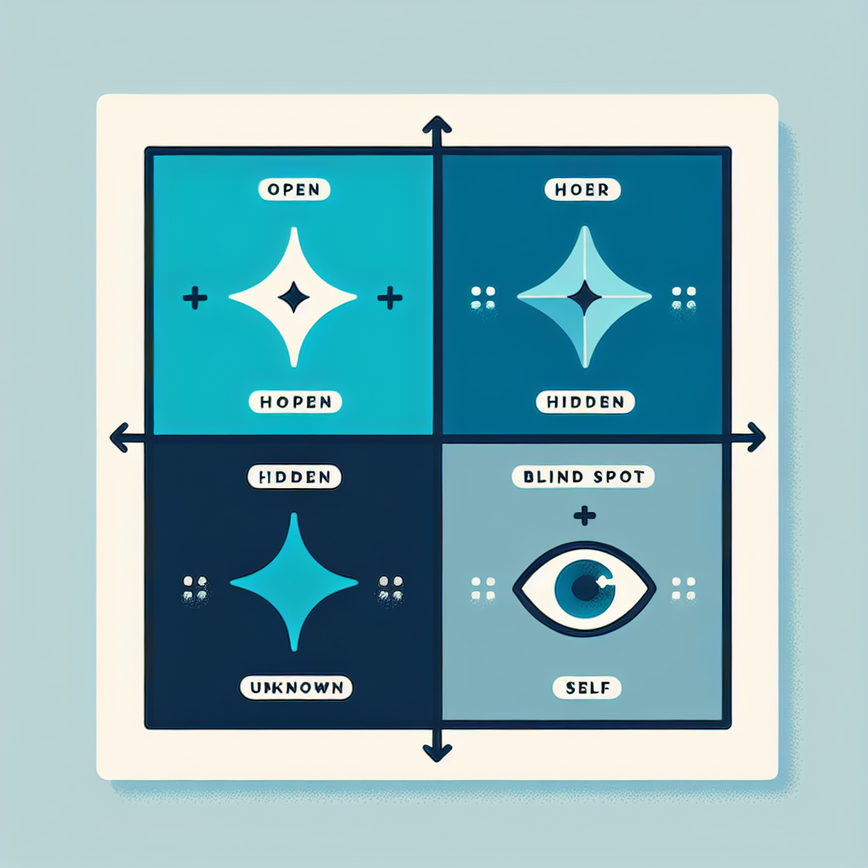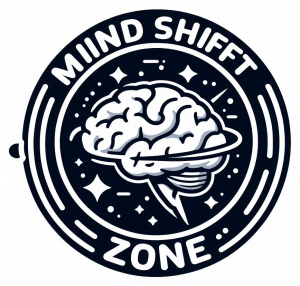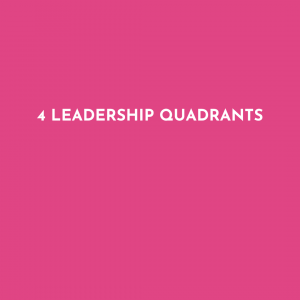If you’re looking for a clear, practical Johari Window overview — what it is, how it works, and how to use it with leaders and teams — this complete Johari Window guide is your starting point. The Johari Window model helps people understand themselves and each other by mapping what’s known and unknown to self and others. Founders, CEOs, and teams use it to build trust, accelerate feedback, and unlock performance.
This complete Johari Window guide gives a concise foundation and then goes deeper with examples, facilitation steps, and integration tips. If you’ve ever wondered “what is the Johari Window and how do I apply it without it feeling awkward or abstract?”, you’ll find a practical Johari Window overview plus the exact moves to turn insight into action.
Table of Contents
- What Is the Johari Window?
- A Brief History and How It Works
- The Johari Window Quadrants Explained
- Why Founders, CEOs, and Teams Use the Johari Window
- How to Run a Johari Window Workshop
- Using the Johari Window in 1:1 Coaching and Leadership Development
- Tools and Templates
- Integrating the Johari Window With Other Frameworks
- Measuring Impact: KPIs and Signals
- Common Pitfalls and How to Avoid Them
- Real-World Scenarios
- FAQs
- Next Steps
At mindshift.zone, we’ve facilitated Johari Window workshops and coaching sessions for tech companies, agencies, and venture-backed startups across Europe and Ukraine. Led by a certified business coach with 10+ years of executive coaching and team facilitation, we combine coaching, consulting, and strategic facilitation so your team doesn’t just learn the model — they use it to achieve clarity, align goals, and shift leadership mindset.
Every engagement is designed for your context: we do a light pre-assessment, tailor prompts to your operating model, and ensure post-session follow-through so the Open area grows over time rather than shrinking after a single workshop. Sessions are available in English or Ukrainian, on-site or virtual.
What Is the Johari Window?
The Johari Window is a simple, powerful framework for understanding interpersonal awareness and communication. It divides personal information into four quadrants based on two dimensions: what is known to you and what is known to others. By expanding the Open area (mutual knowledge), teams improve collaboration, reduce friction, and make better decisions faster.
Think of it as a 2×2 map of awareness. As you share relevant context (reducing Hidden) and invite feedback (reducing Blind Spots), the shared Open area grows — and work gets easier. The goal is not oversharing; it’s intentional transparency so people can coordinate effectively.
In plain terms: the Johari Window helps you answer what the Johari Window is with a practical tool to increase self-awareness, invite better feedback, and create more transparent, effective teams.
Why this matters: when teams have a larger Open area, they waste less time guessing intent, recover from mistakes faster, and create a culture where learning is normal.
A Brief History and How It Works
- Created in 1955 by psychologists Joseph Luft and Harrington Ingham.
- Often used in leadership development, coaching, organizational change, and team-building.
- Built on two actions:
- Self-disclosure: sharing relevant information about yourself with others.
- Feedback: receiving and integrating observations from others.
The interplay of these two actions expands the Open area, which correlates with trust, psychological safety, and communication effectiveness.
As self-disclosure increases, the Hidden (what you know but others don’t) shrinks. As high-quality feedback increases, the Blind Spot (what others see that you don’t) shrinks. New experiences and experiments help surface parts of the Unknown. Over time, this creates a virtuous cycle: trust enables sharing; sharing enables better collaboration; better collaboration reinforces trust.
Practical note: the Johari Window model works best when disclosure and feedback are specific, work-related, and consent-based. “Optional pass” norms and a skilled facilitator help keep it safe and productive.
The Johari Window Quadrants Explained

The Johari Window quadrants are:
- Open (Arena): Known to self and known to others
- Hidden (Facade): Known to self but unknown to others
- Blind Spot: Unknown to self but known to others
- Unknown: Unknown to self and unknown to others
Here’s how each works in leadership and teamwork.
Open (Arena)
What it is: Shared knowledge about you — strengths, preferences, values, constraints — that others also recognize.
Why it matters: Larger Open areas correlate with high trust, faster decision-making, and fewer misunderstandings.
Example: A product leader shares how they weigh customer data vs. vision, plus their “no-meetings” focus blocks. The team anticipates decisions and timings, reducing back-and-forth and stress.
How to grow it:
- Share work preferences, constraints, and goals proactively. Add context to decisions so others can align without waiting.
- Invite feedback regularly and act on it. When you close the loop, people see it’s safe and worthwhile to speak up.
- Use norms that reward transparency and learning. Celebrate updates, retros, and decision logs, not heroics and silos.
Hidden (Facade)
What it is: Things you know about yourself that others don’t — fears, goals, assumptions, past experiences.
Signs it’s high: People are hard to read, conflict avoidance, surprises in behavior.
Why it matters: high Hidden areas force colleagues to guess. Guessing leads to second-guessing, rework, and unnecessary tension.
How to reduce it:
- Practice selective self-disclosure aligned with context and psychological safety. Share “need to know” info that improves collaboration.
- Narrate decisions and trade-offs so others understand your thinking. “I’m choosing X over Y because…” reduces confusion.
- Use working-with-me manuals and team charters. Document the basics so new joiners plug in quickly.
Blind Spot
What it is: What others see that you don’t — communication tics, impact of your decisions, overlooked strengths or derailers.
Risk if unaddressed: Erodes trust and performance; repeated patterns go uncorrected.
Example: A leader who calls their style “direct” learns it’s landing as “dismissive” in standups. With SBI feedback and a small experiment (summarize and invite input before deciding), the impact shifts without losing speed.
How to shrink it:
- Encourage clear, behavior-based feedback (e.g., Situation–Behavior–Impact). Specifics turn perception into actionable insight.
- Ask “What’s one thing I could do more/less of?” in 1:1s. Small, frequent asks are easier to answer honestly.
- Run periodic 360s and follow up with action plans. Track one or two behaviors for a focused improvement cycle.
Unknown
What it is: Untapped potential, latent strengths, or triggers that neither you nor others fully see yet.
Sources: New contexts, stretch roles, crises, or deliberate experimentation.
Example: An engineer rotating into a customer call discovers a knack for partner management, opening up new career paths and org design possibilities.
How to explore it:
- Rotate roles, pilot new responsibilities, run safe-to-try experiments. Small tests reveal capabilities with low risk.
- Use coaching to surface patterns and values. Reflection helps connect dots that busy weeks obscure.
- Reflect after key events to extract learning. A brief post-mortem turns unknowns into knowns.
For a friendly deep dive into the quadrants with practical examples, see our Johari Window Model: Understanding the Four Quadrants.
Why Founders, CEOs, and Teams Use the Johari Window
Leaders choose the Johari Window model because it delivers:
- Faster alignment on goals and priorities
- Fewer miscommunications and rework
- Stronger feedback culture and psychological safety
- Clearer leadership brand and decision-making transparency
- Accelerated onboarding for new leaders and teams
- Better cross-functional collaboration, especially in hybrid settings
In high-velocity environments, ambiguity and speed collide. The Johari Window gives a shared language to reduce Hidden assumptions and shrink Blind Spots quickly, so teams can focus on outcomes instead of decoding each other.
At mindshift.zone, we see these outcomes consistently when we blend coaching (mindset), consulting (process), and facilitation (team dynamics) into one integrated journey.
How to Run a Johari Window Workshop

Use this facilitation guide to run a 90–150 minute session for leadership or project teams.
Preparation
- Define objective: trust-building, feedback practice, alignment, or role clarity. Choose one primary goal to keep the session focused.
- Select participants: 5–10 is ideal for depth; for larger groups, use breakout pods. Ensure cross-functional representation if collaboration is the focus.
- Materials: Adjective list or strengths prompt set, sticky notes or digital board, timers. Tailor prompts to your values or leadership principles for relevance.
- Psychological safety: Set norms (confidentiality, curiosity, optional pass). Ensure a skilled facilitator — our certified coach-led approach keeps sessions safe and productive.
Facilitator tip: Send a short pre-read explaining the Johari Window model and why it’s useful. Clarity upfront lowers anxiety and speeds up engagement.
Step-by-Step Facilitation
- Context (10 min): Explain the Johari Window and intended outcomes. Model vulnerability. Share a brief example of your own Hidden-to-Open shift.
- Individual reflection (10–15 min): Each person selects 5–10 adjectives/strengths that describe themselves and 1–2 growth edges. Encourage concrete examples that illustrate each choice.
- Peer feedback (20–30 min): Teammates select adjectives that describe each person. Use behavior-based examples. Coach for SBI clarity and appreciative specificity.
- Combine and compare (20–30 min): For each person:
- Overlap = Open
- Self-only = Hidden
- Others-only = Blind Spot
- Neither = Unknown (capture hypotheses)
- Dialogue (20–40 min): Discuss patterns. Ask:
- What surprised you?
- What do you want to share more of?
- What one behavior will you experiment with?
Capture agreements (e.g., “announce trade-offs in weekly standup”) in a visible space.
- Commitments (10 min): Each person writes a small, observable action and a check-in date. Keep behaviors tiny and testable.
- Close (5 min): Appreciation round. Reaffirm norms for ongoing feedback. Invite voluntary shares of “one thing I learned about the team.”
Remote/Hybrid Adaptation
- Use a collaborative board (Miro/Mural/FigJam) and breakout rooms.
- Collect adjectives asynchronously before the live session to save time.
- Record only the facilitator’s walkthrough; never record personal feedback without consent.
- Use chat for quick “+1” signals, and reactions to keep energy high in silence-prone moments.
- Assign a notetaker per pod to capture actions; keep personal feedback private to the individual’s space.
Sample Agenda (120 minutes)
- 10 — Intro, safety, purpose
- 15 — Self-selection of adjectives
- 30 — Peer feedback rounds
- 35 — Group discussion and insights
- 20 — Action commitments and next steps
- 10 — Close and appreciation
Why this agenda works: it front-loads clarity and ends with commitments, so insights translate into behavior change rather than fading after the session.
Aftercare
- Follow up in 2–4 weeks with a short retro.
- Managers integrate one micro-commitment into 1:1s.
- Share how to work with me docs to keep Open areas growing.
mindshift.zone can design and run this end-to-end for your leadership team or full organization, in English or Ukrainian, on-site or virtual.
Using the Johari Window in 1:1 Coaching and Leadership Development
Executive coaching: Explore Blind Spots that impact strategy, delegation, or investor communication. Translate insight into behavior change.
Example moves: align intended impact with perceived impact, build a “say-do” cadence for commitments, and rehearse high-stakes conversations using SBI to anticipate reactions.
Manager development: Practice weekly micro-feedback loops to normalize small, safe, soon feedback.
Prompts that work: “One thing you did that helped…” and “One thing to try next time…”. Make it routine so it feels like maintenance, not a performance review.
Performance and growth: Align strengths with high-impact work; frame growth edges as experiments.
Shift from “fixing” to “testing”: pick one behavior, define a lightweight experiment, and review results within two weeks.
Founder transitions: As roles evolve, use self-disclosure to reset expectations with the board and team.
Share what will change (decisions you keep vs. delegate), how you’ll communicate, and what support you’ll need in the next phase.
Our coaches bring 10+ years of executive coaching and team facilitation, with deep experience in startup and founder challenges. We’ve supported venture-backed leadership teams through pivots, scale-ups, and post-merger integration.
Tools and Templates
You can use the classic adjective list or these alternatives:
- Strength prompts: I bring…, I’m energized by…, People rely on me for…
- Impact prompts: When under pressure, I tend to…, My default conflict style is…
- Growth prompts: One behavior I’m practicing…, I need support when…
Make prompts concrete and work-focused. If you use adjectives, provide brief definitions or examples to ensure shared understanding across cultures and languages.
Quick checklist:
- Keep adjectives behaviorally observable.
- Limit to 5–10 selections to force clarity.
- Require examples for feedback selections.
- Encourage opt-out rights for sensitive topics.
- Document actions and revisit them.
Example “working with me” sections: communication preferences, decision-making style, meeting norms, feedback preferences, and current priorities. Keep it to one page and update quarterly.
Integrating the Johari Window With Other Frameworks
– Radical Candor + SBI: Use SBI (Situation–Behavior–Impact) to deliver candid, kind feedback that shrinks Blind Spots. Pair it with Radical Candor’s care-challenge balance so feedback is both honest and humane.
– 360 Feedback: Turn themes into concrete Johari actions and experiments. Map each theme to a specific behavior (Open/Hidden/Blind) and track one change at a time.
– Strengths/Personality (CliftonStrengths, DiSC, MBTI): Translate trait language into day-to-day behaviors for the Open area. “Strategic” becomes “I always propose 3 options with trade-offs.”
– OKRs: Pair key results with communication commitments (e.g., decision logs) to reduce Hidden assumptions. Treat comms rituals as enabling KRs that keep teams aligned during execution.
– Retrospectives: Add a Johari check-in item quarterly to sustain openness. Ask “What moved from Hidden to Open this quarter, and what did it unlock?”
This integrated approach is where mindshift.zone excels — coaching for mindset, consulting for systems, facilitation for team practice.
Measuring Impact: KPIs and Signals
Track leading and lagging indicators:
- Leading indicators:
- Frequency of feedback exchanges
- Psychological safety pulse (2–3 item survey)
- Working with me docs completed
- Action commitments made and checked-in
- Lagging indicators:
- Decision speed and rework rate
- Cross-functional cycle time
- Engagement and retention on key teams
- 360 themes shifting over time
Keep measurement lightweight and consistent. For example, add two pulse items to a monthly survey and review action commitments in team meetings. Consistency over precision is what sustains culture change.
- Qualitative signals:
- Leaders narrate trade-offs publicly
- More proactive updates, fewer “status surprises”
- Peer-to-peer feedback increases without manager mediation
- New strengths emerge from rotations or experiments
Common Pitfalls and How to Avoid Them
- Skipping safety: Set clear norms; model vulnerability at the top. Explain boundaries up front; use “optional pass” and confidentiality.
- Vague feedback: Require specific, behavior-based examples. “In last Tuesday’s review (Situation), you interrupted twice (Behavior), which shut down discussion (Impact).”
- Overexposure: Self-disclose thoughtfully; not all information is appropriate for all contexts. Keep it work-relevant and need-to-know.
- No follow-through: Convert insights into one micro-commitment per person with a review date. Small wins compound and build trust.
- Treating it as a one-off: Schedule quarterly refreshers; build it into rituals. Add a Johari check-in to retros or all-hands Q&A.
Real-World Scenarios
- Venture-backed SaaS scale-up: Leadership team used the Johari Window to reveal a Blind Spot around last-minute pivots. By committing to decision logs and earlier stakeholder updates, they cut rework by 22% in two quarters. The shift also reduced weekend scramble work and improved confidence in roadmaps.
- Creative agency: A Hidden conflict avoidance pattern surfaced. After practicing SBI feedback and adding weekly tension-clearing slots, client change requests were handled faster with less stress. The team reported clearer briefs and fewer passive-aggressive email threads.
- Post-merger tech unit: Unknown quadrant exploration via role rotations uncovered unexpected strengths in partner management, informing a new org design. Documenting these discoveries in “working with me” pages accelerated integration across the new structure.
These outcomes are typical when teams blend insight with action. Our workshops and retreats focus on clarity, goal alignment, and leadership mindset so progress sticks.
FAQs
- Is the Johari Window a personality test? No. It’s a communication and awareness framework focused on behavior and feedback, not fixed traits. Use it to guide conversations, not to label people.
- How often should teams use it? Start with a facilitated session, then weave lightweight check-ins quarterly. Keep momentum with tiny monthly experiments and brief debriefs.
- Does it work with new teams? Yes. Begin gently with strengths and preferences. Deepen over time as safety grows, adding constructive feedback once norms are established.
- Does culture affect it? Calibrate disclosure and feedback norms to context. Use opt-outs and consent. Translate prompts so they’re culturally clear and behavior-focused.
- What group size is best? 5–10 for rich interaction; larger groups benefit from pods and clear structure. For big events, run parallel pods with shared closing.
- Is it appropriate for sensitive topics? Keep scope work-related. For personal matters, use coaching channels and consent. Set boundaries and provide resources if deeper support is needed.
Next Steps
- Run your first session using the facilitation guide above, or bring in a certified facilitator to ensure safety and momentum.
- Deepen your understanding of each quadrant with our Johari Window quadrants.
- If you’re a founder, CEO, or team lead ready to build a durable feedback culture, mindshift.zone can design a tailored coaching + facilitation journey that unlocks clarity, alignment, and performance. Reach out to explore a workshop or leadership retreat.











